lock JEEP LIBERTY 2005 Owners Manual
[x] Cancel search | Manufacturer: JEEP, Model Year: 2005, Model line: LIBERTY, Model: JEEP LIBERTY 2005Pages: 1272, PDF Size: 11.21 MB
Page 15 of 1272
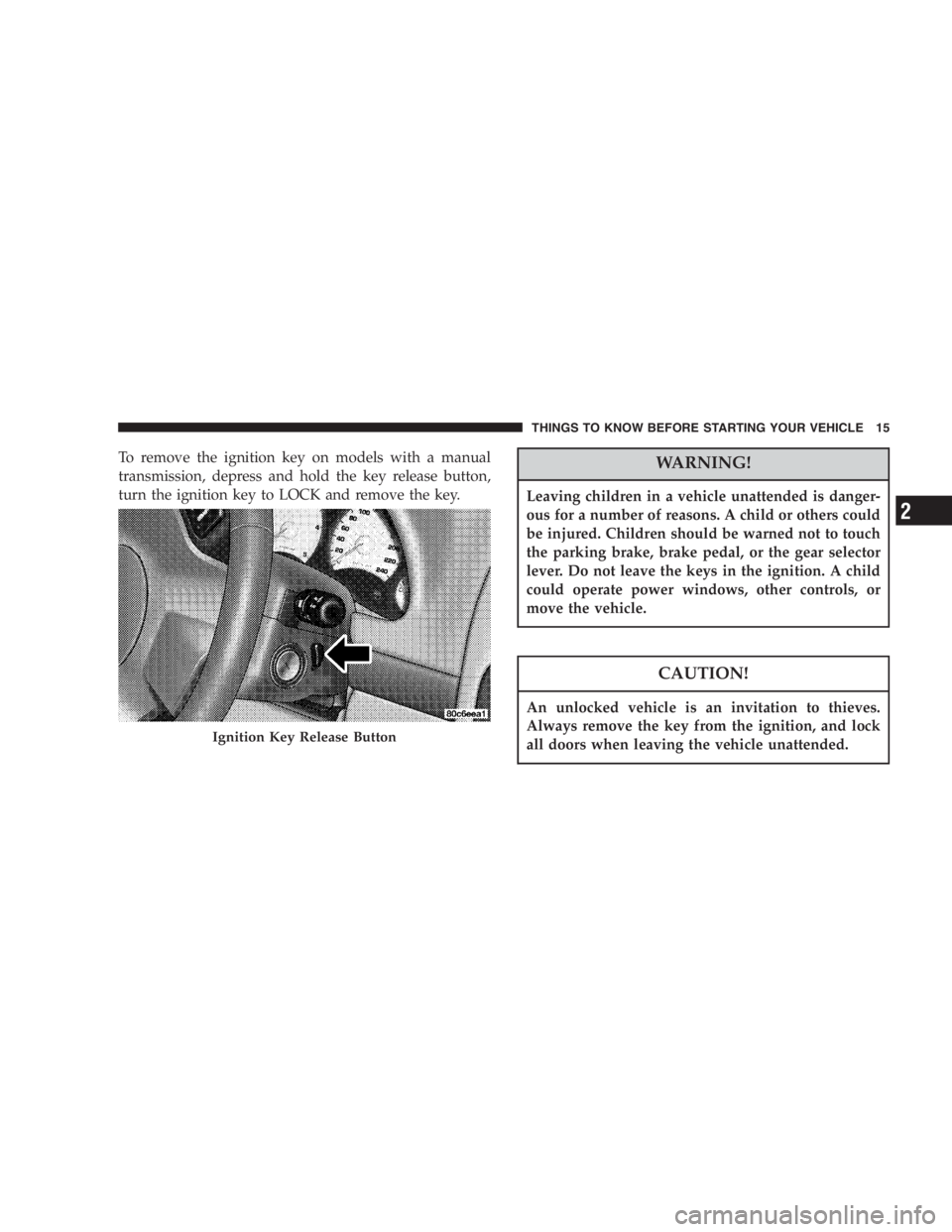
Be certain that the seatback is securely locked into
position. If the seatback in not securely locked into
position the seat will not provide the proper stability
for child seats and/or passengers. An improperly
latched seat could cause serious injury.
Page 17 of 1272
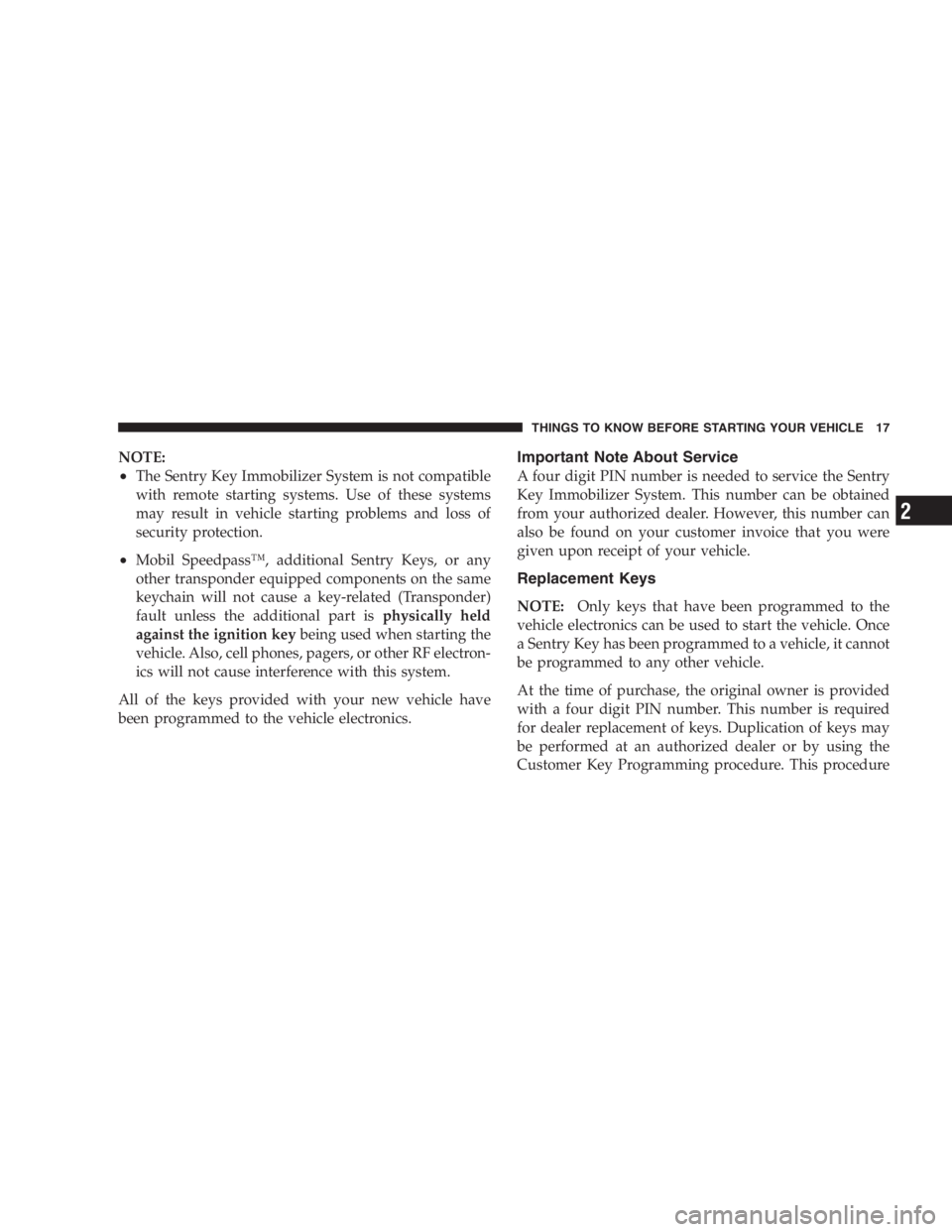
If the hood is not fully latched, it could fly up when
the vehicle is moving and block your forward vision.
Be sure all hood latches are latched fully before
driving.
Page 140 of 1272
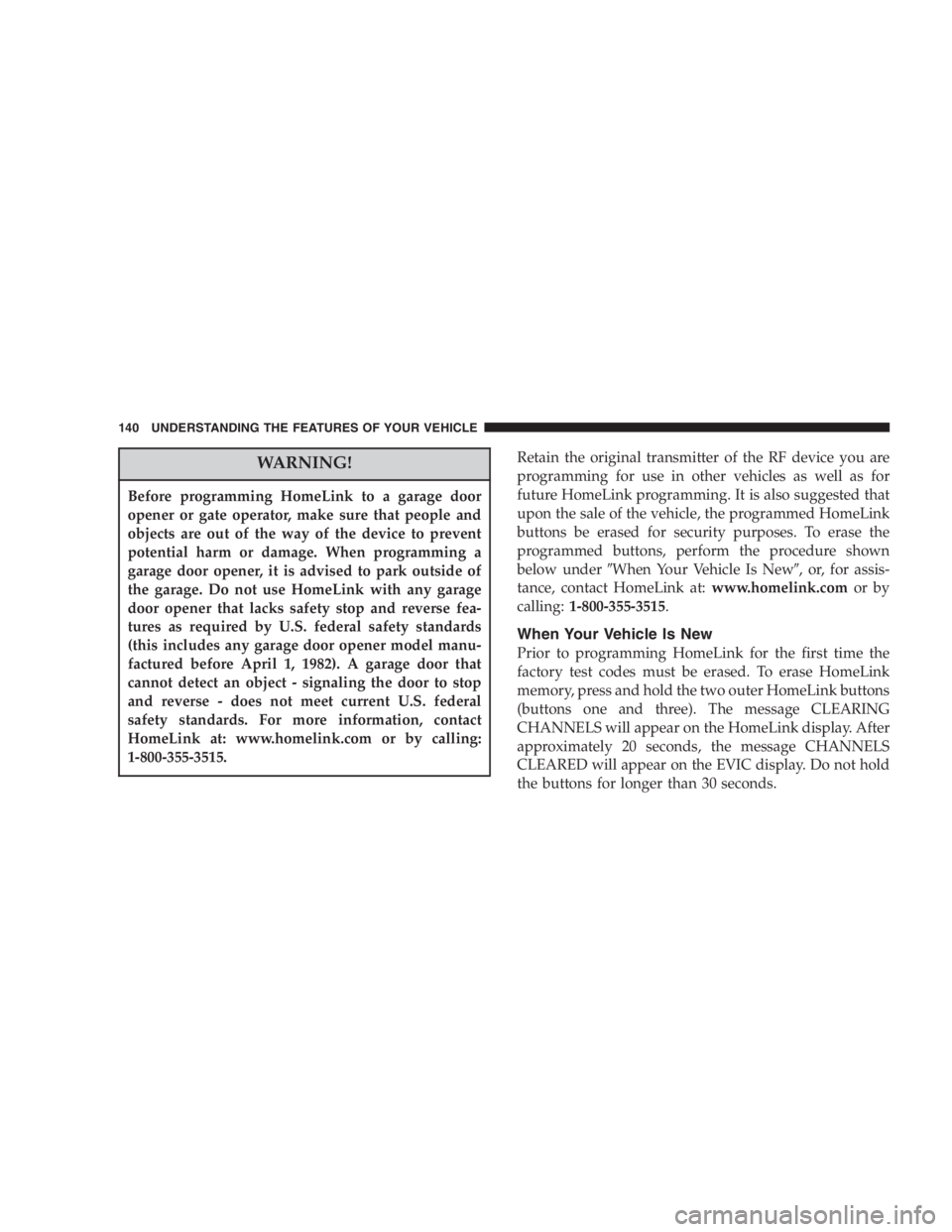
Leaving children in a vehicle unattended is danger-
ous for a number of reasons. A child or others could
be injured. Children should be warned not to touch
the parking brake, brake pedal, or the gear selector
lever. Do not leave the keys in the ignition. A child
could operate power windows, other controls, or
move the vehicle.
CAUTION!
An unlocked vehicle is an invitation to thieves.
Always remove the key from the ignition, and lock
all doors when leaving the vehicle unattended.
Ignition Key Release Button
THINGS TO KNOW BEFORE STARTING YOUR VEHICLE 15
Page 147 of 1272
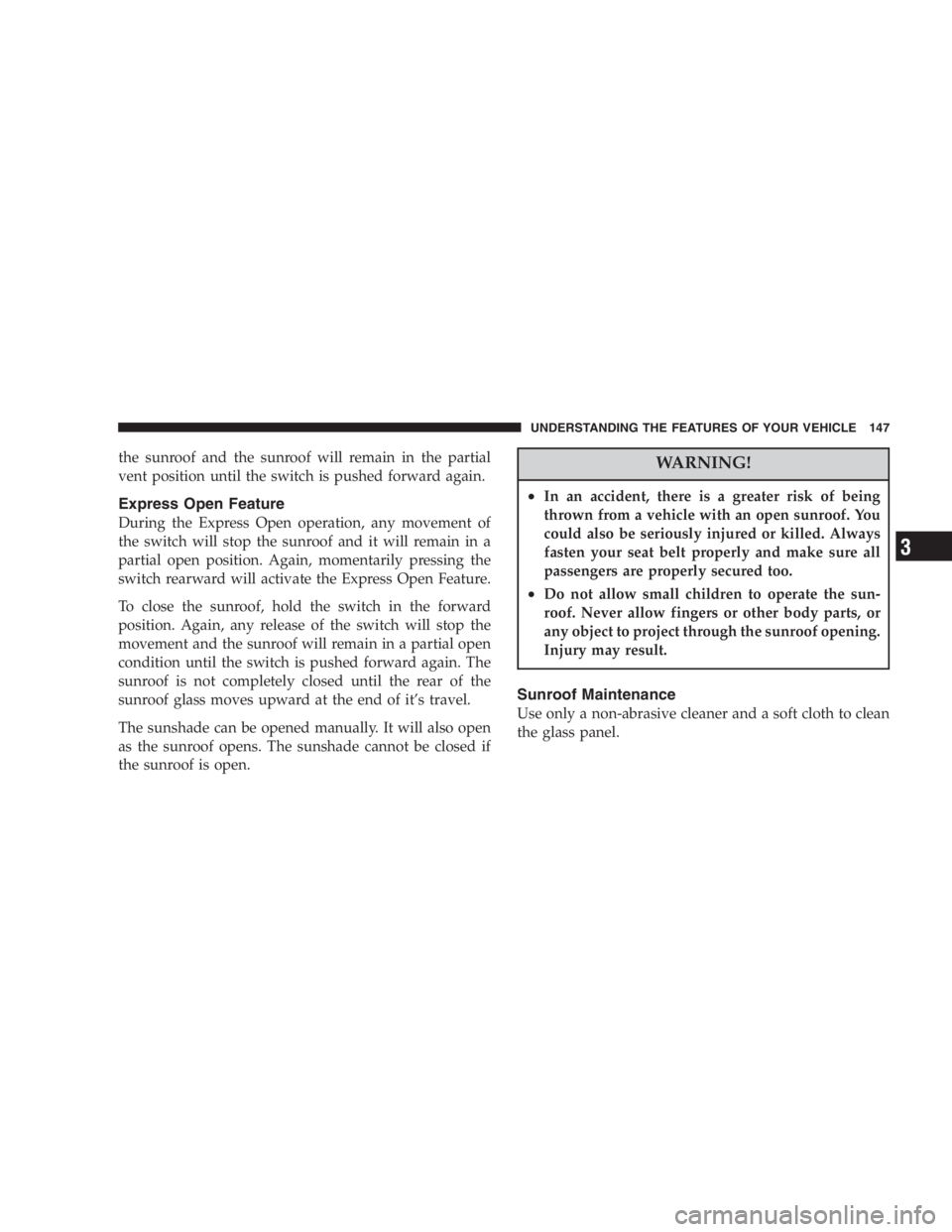
CAUTION!
An unlocked vehicle is an invitation to thieves.
Always remove the key from the ignition and lock
all of the doors when leaving the vehicle unattended.
Page 149 of 1272
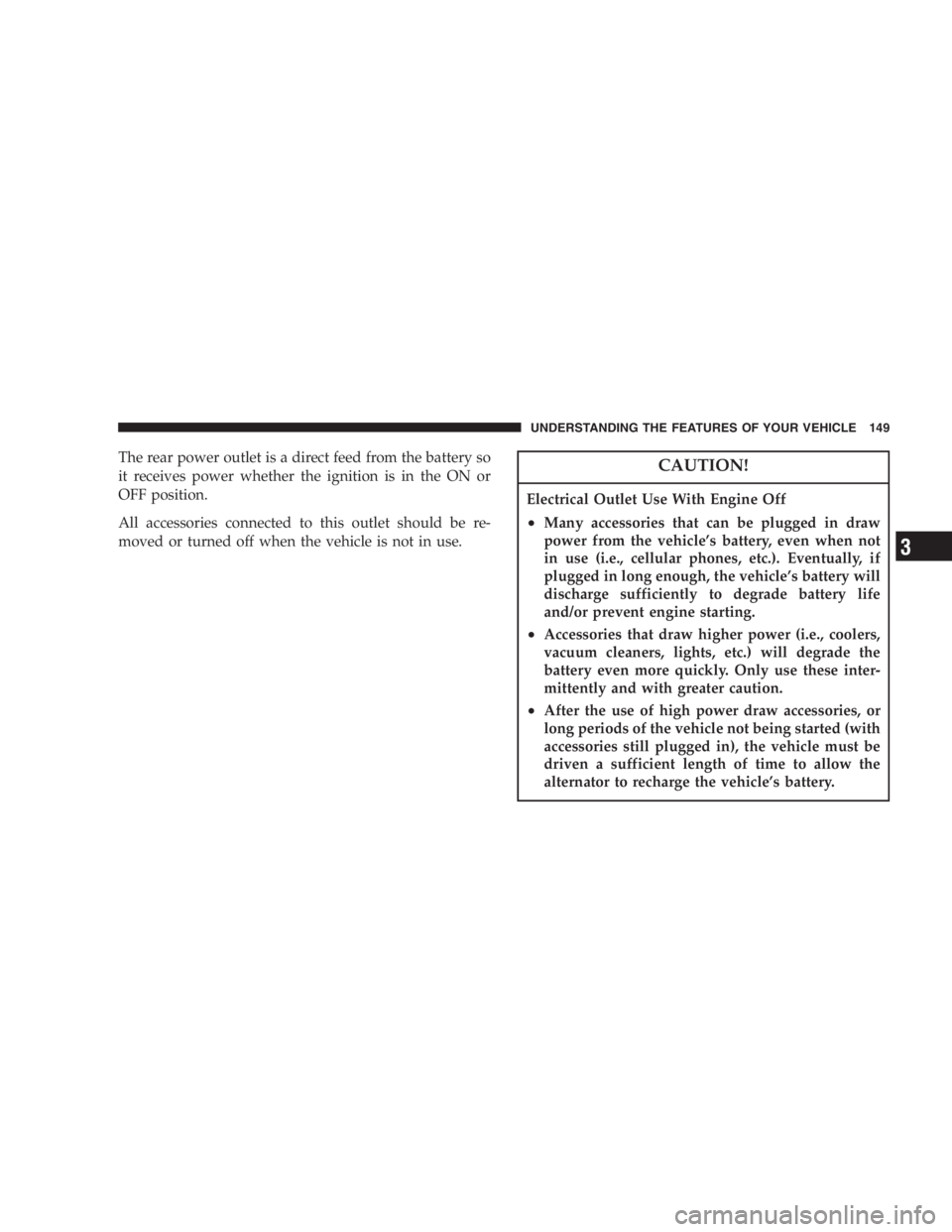
Avoid trapping anyone in the vehicle in a collision.
Remember that the rear doors can only be opened
from the outside when the child protection locks are
engaged.
Child Lock Control
24 THINGS TO KNOW BEFORE STARTING YOUR VEHICLE
Page 152 of 1272
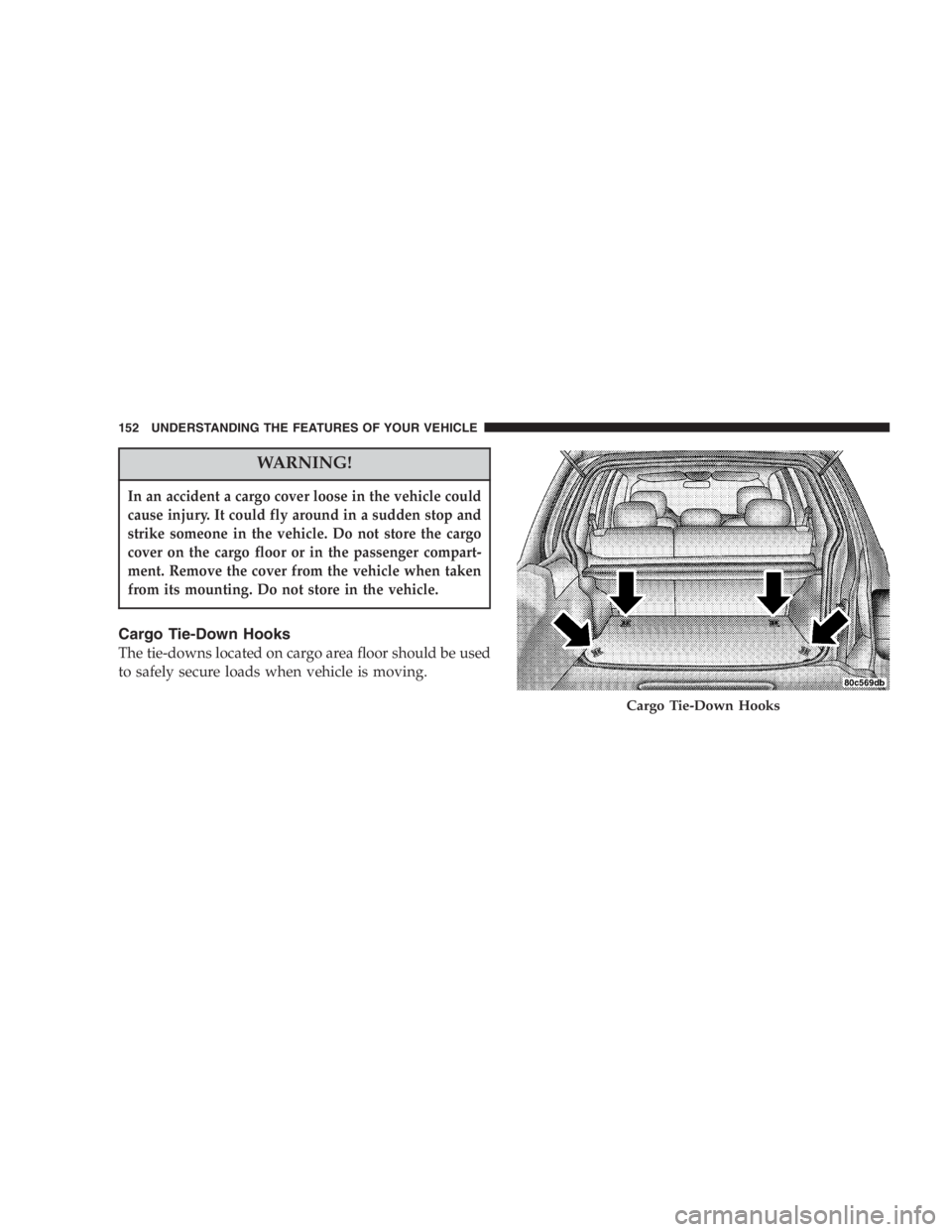
To avoid injury stand back when opening. Glass will
automatically rise.
NOTE:The transmitter can be programmed to unlatch
the flip-up window immediately upon activation of the
“Rear Release” button (without pressing and holding)
(within 23–50 feet (7–15 meters) of the vehicle) by per-
forming the following procedure:
1. Press and hold the “Unlock” button on the transmitter.
2. Continue to hold the “Unlock” button, wait at least 4
but no longer than 10 seconds, then press the “Rear
Release” button.
3. Release both buttons.
4. Repeating steps 1–3 will restore original transmitter
operation.NOTE:Unlatching the flip-up window will unlock the
swing gate. After closing the flip-up window, press the
“Lock” button on the transmitter to lock the swing gate.
Panic Alarm
The panic mode flashes the park lights, and sounds the
horn for about 3 minutes or until the alarm is turned off.
To Use the Panic Alarm
Press and hold the PANIC button for at least 1 second to
activate the panic alarm. Press and hold the PANIC
button a second time to deactivate the alarm. The alarm
will also shut itself off after starting the vehicle and
accelerating to 15 mph (24 km/h).
NOTE:The “Panic” and “Security” alarms are quite
different. Please take a moment to activate the “Panic”
and the “Security” modes to hear the differences in the
horn. In case one should go off in the future, you will
need to know which mode has been activated in order to
deactivate it.
THINGS TO KNOW BEFORE STARTING YOUR VEHICLE 27
Page 159 of 1272

Do not press on rear wiper blade when closing
swing gate, as damage to the blade will result.
WARNING!
Driving with the flip-up window open can allow
poisonous exhaust gases into your vehicle. You and
your passengers could be injured by these fumes.
Keep the flip-up window closed when you are
operating the vehicle.
NOTE: The rear swing gate will lock while the rear
wiper is operating. The gate will stay locked until the
wiper is turned off and the gate is unlocked (by key,
lock switch, or key fob).
NOTE:The swing gate will lock automatically when the
vehicle begins moving.
34 THINGS TO KNOW BEFORE STARTING YOUR VEHICLE
Page 195 of 1272

Improper installation of a child restraint to the
LATCH anchorages can lead to failure of an infant or
child restraint. The child could be badly injured or
killed. Follow the manufacturer’s directions exactly
when installing an infant or child restraint.
Installing Child Restraints Using the Vehicle Seat
Belt
The passenger seat belts are equipped with either cinch-
ing latch plates or automatic locking retractors, which are
designed to keep the lap portion tight around the child
restraint so that it is not necessary to use a locking clip. If
the seat belt has a cinching latch plate, pulling up on theshoulder portion of the lap/shoulder belt will tighten the
belt. The cinching latch plate will keep the belt tight,
however, any seat belt system will loosen with time, so
check the belt occasionally and pull it tight if necessary.
If the seat belt has a automatic locking retractor, it will
have a distinctive label. Pull the belt from the retractor
until there is enough to allow you to pass through the
child restraint and slide the latch plate into the buckle.
Then, pull the belt until it is all extracted from the
retractor. Allow the belt to return to the retractor, pulling
on the excess webbing to tighten the lap portion about
the child restraint. Refer to “Automatic Locking Mode”
earlier in this section.
In the rear seat, you may have trouble tightening the
lap/shoulder belt on the child restraint because the
buckle or latch plate is too close to the belt path opening
on the restraint. Disconnect the latch plate from the
70 THINGS TO KNOW BEFORE STARTING YOUR VEHICLE
Page 256 of 1272
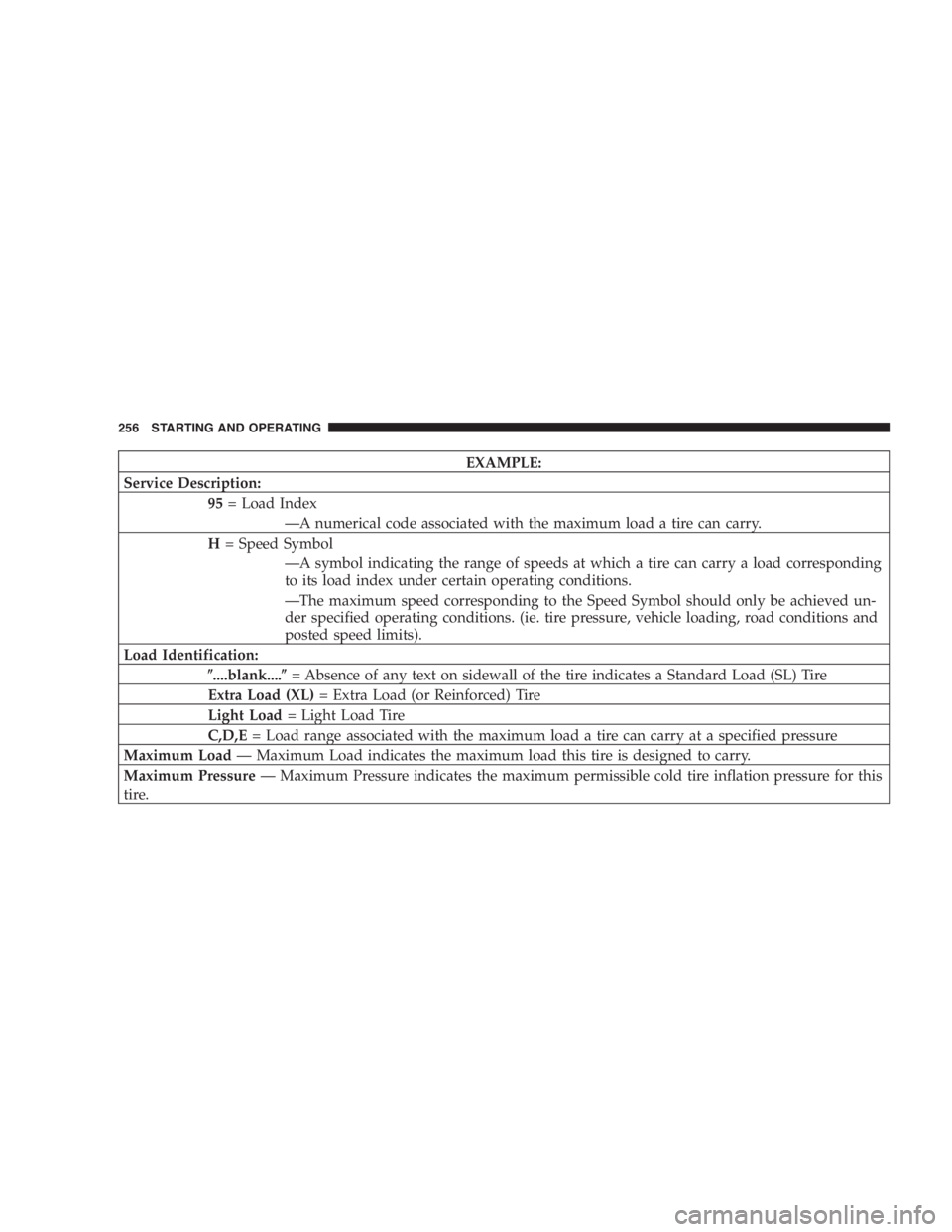
Unintended movement of a vehicle could injure
those in and near the vehicle. As with all vehicles,
you should never exit a vehicle while the engine is
running. Before exiting a vehicle, you should always
shift the vehicle into P (Park), remove the key from
the ignition, and apply the parking brake. Once the
key is removed from the ignition, the transmission
shift lever is locked in the P (Park) position, securing
the vehicle against unwanted movement. Further-
more, you should never leave children unattended
inside a vehicle.
Page 257 of 1272
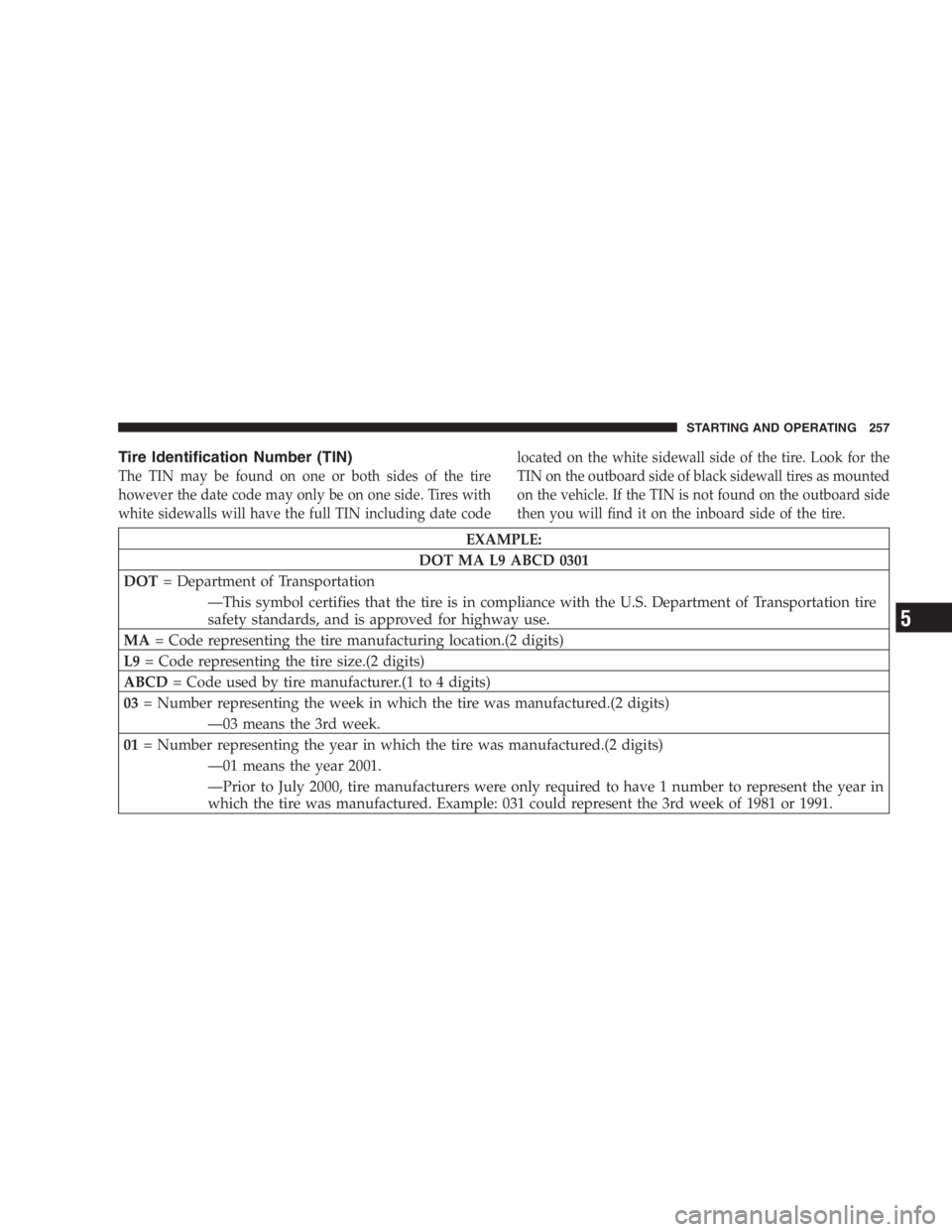
Before moving the shift lever out of P (Park), you must
turn the ignition from LOCK to ON so the steering
wheel and shift lever are released. Otherwise, damage
to the steering column or shifter could result.
Do not coast in N (Neutral) and never turn off the
ignition to coast down a hill. These are unsafe
practices that limit your response to changing traffic
or road conditions. You might lose control of the
vehicle.